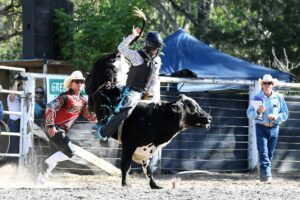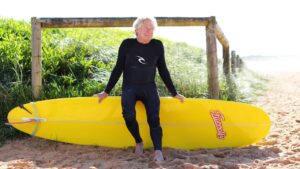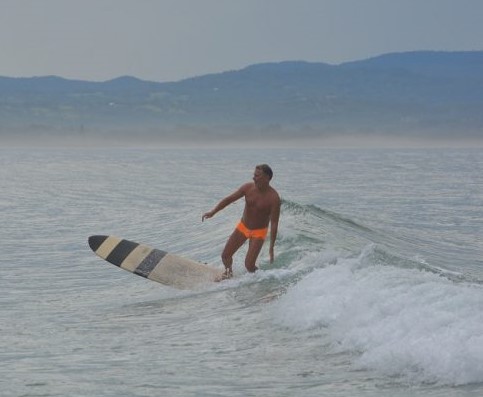My nose is gushing. My eyes are swollen – almost closed. My skin is blotchy and itchy. I am sneezing every few seconds. Allergy. Hay fever. Hence, I am waiting for my turn at the pharmacy counter for the chemist to sell me something that will reduce my misery.
I look down at the array of colourful pharmaceutical goodies on display on the shelf just below the counter. What “headliner” drugs do they have placed at the key eyeline spot to grab the attention of the punters? Of course. Self-testing drug kits. Makes sense. Why not remind people (when they are about to purchase their anti-biotics, anti-depressants, anti-anxiety pills) that they might be only five minutes away from being pulled over by a police officer, given a random drug test and, potentially, lose their driver’s license for months. If you’ve got anything dodgy in your blood… better buy one of our kits. Now!

Wow. Check out the range of illicit substances these modern self-testing kits are good for. The list of sinful substances are emblazoned in bold and colourful letters on the packaging. I had no idea. Marijuana. Cocaine. Methamphetamine. Amphetamine. MDMA. Heroine. Opium. And that’s only the illegal stuff. This handy little kit will also let you know that your TCA’s, barbiturates, benzos, and methadone hits are showing as well. Better have a legal prescription!
I really didn’t know that modern, commercially available, testing kits could cover such a vast range of sins. Can cop’s testing kits do the same thing? It seems that we can hide nothing from the authorities. Every addiction… every anti-social activity… every toxic pastime… open to scrutiny. Just one little gob on a piece of absorbent testing material and it can mean trouble.
Fits and seizures!
Geez. I only got out of the surf half an hour ago. Is that still in my blood. If I get pulled over now, will it show up in the police testing kit? Probably. I’m screwed.

Last week I heard a program on Radio ABC discussing the plight of a thirteen-year-old girl who, through her chosen sport, had been knocked unconscious many times, had experienced fits and seizures several times after heavy falls, had been diagnosed with many concussions and, to top it off, had had several brain bleeds. These were the concerning injuries. The broken ribs, broken collar bone, shoulder dislocations, multiple broken ribs and hundreds of bumps and bruises were considered inconsequential.
Sadly, listening to the advice of a neurological specialist, the girl’s Mum banned her from continuing with her sport. Despite her mother’s insistence that her beloved activity, (which seemed destined to eventually either kill or permanently brain damage the young’un if she continued), had to be left behind the girl had made it clear that, at some point, she would start riding bulls again. The kid even implied that she was willing to pack her bag and bugger off and join the rodeo. The host of the ABC program suggested that this seemed very much like addictive behaviour.
The same program described the plight of a man in his early thirties who was currently having a short break from bull riding. His problems? Multiple concussions. Memory loss. More broken bones than he can remember. Multiple surgeries to correct broken body bits. Headaches. Worst of all… troubling suicidal thoughts! Did the talented athlete intend to give up the sport. Not on your nelly. He intended to be back on the bulls as soon as his body and mind would let him.
Once bitten, you are hooked.
The professional cowboy confessed that bull riding was not just his sport. It was his obsession. There are plenty of sports that, if you work hard enough at it, he believes, you can achieve some sort of mastery. To him, such sports are unlikely to lead to obsession. They are the kinds of sports that he would not be able to maintain an interest in for long. There are other sports, however… bull riding for example… that no one… no matter how good they become… will ever get close to mastering. Those sports, according to the bull rider, lead to obsession. These sports are almost impossible to give up. Once bitten, you are hooked. Addicted. Dangerously so.
As the reporter, who made the radio program, suggested, this smells suspiciously like addictive behaviour. It seems that bull riding is some kind of drug.

While listening to both of the bull riders describing their sport obsession, I couldn’t help thinking of William Finnegan’s New Yorker article (Playing Doc’s Games) about his experiences as a surfer in San Francisco. This article is not only arguably the greatest and most insightful piece of writing that has ever been penned on the subject of surfing, but it also sheds a light on the perils of acquiring a surfing addiction.
In “Playing Doc’s Games” Finnegan describes a scenario where San Francisco surfers, like bull riders, become obsessed with their sport. As surfers, despite knowing that they will never achieve true mastery, they will make a lifelong commitment to striving towards the mastery that will never come. It’s a form of addiction.
Finnegan had two big wave riding friends who used to join him regularly during his San Francisco “Ocean Beach” adventures. The Doc character, in the article, couldn’t understand Finnegan’s ambivalence to the surfing life. Finnegan, despite having surfed for over twenty years (in hundreds of locations all around the world, obsessively searching for the perfect wave) knew that his relationship with surfing conflicted with his everyday adult life. To Doc surfing was neither a sport, nor a lifestyle. Doc saw surfing as a “path.” Doc believed Finnegan’s attempts to pursue an everyday life were an obstruction to his journey on the surfer’s path. Having a surfing life and another life was not an option for this character. There was only the “path”. While Finnegan had no doubt that Doc had a rich life in terms of his relationships and work away from the beach it was clear that surfing was not something he perceived as separate… something compartmentalized away from the rest of his life. His life, work, relationships were all part of his surfing path. That’s commitment.
Living with the disabling enchantment
Finnegan’s other Northern Californian surfing mate, Bill, didn’t mince his words when discussing surfing. He believed that surfing was a sport for no hopers. “The surfing life breeds a load of derelicts”, he argued. Surfing is such a great sport that “it corrupts people”. When people first become surfers it isn’t long until nothing else matters in their lives. “It’s like a drug addiction. You just don’t want to do anything else.” You are hooked. Obsessed.
Near the end of the article Finnegan admits that he is trying to “live his life with the disabling enchantment of surfing.”

Dozens of other writers, (though few have expressed it quite so eloquently), have described this surfing affliction. One brilliant example is the book by Leonard Leuras called “Surfing: The Ultimate Pleasure”. In the book he describes how ancient Hawaiians, when the waves were good, would pack a lunch, leave their work and head to the beach where they would surf all day. There was no room for thought of wives, or children, or family. The kids could go hungry for the time being. There was surfing to be done.
Addiction, indeed.
Way back in the 1960’s Australian surfing legend Midget Farrelly discussed his own personal ambivalence to the sport that he loved in his book “The Surfing Life.”
He shared the following…
“You go into oblivion. Suddenly all your life is there in this long, long, stretched-out wave; you’re removed from the past, everything that has been on your mind has become immaterial, and you feel completely removed from the world around you. Nothing matters any longer other than you and the board and the wave and this instant in time. I sometimes wonder whether this feeling is a healthy thing, and it’s not really what I’m after in surfing. Physically, you’re dead; the physical strain in such surfing is fantastic, and after a hard day in the water you don’t feel like doing anything but lying down and staying down. But I find when I reach that stage that it’s impossible to go to sleep; my mind is ticking over like a dynamo; I lie there thinking about what I have done, and how it fits into everything else. I’m like a drug addict then…”
Crossing the stoke apex
Surfers have, for generations, used the word “stoked” to describe the positive feelings that riding waves provides them with.
Another brilliant surf writer, Matt Warshaw, has described a situation within surfing (and I think we can safely add other sports like bull riding and mountain climbing to this) where the achievement of stoke is not like a chart where the joy measure goes endlessly higher and higher. No. With such addictive sports the graph is more like a Sine curve where a stoke apex exists. Beyond the stoke apex, the athlete can plummet into a toxic space where the athlete’s life, health and relationships are at risk.
It’s warning to us all. The more difficult and challenging (and seemingly impossible to master) an aspect of our life may be, that might be just the thing that we become obsessed with. The greater the challenge, the harder it is to give it up. It’s addictive! But beware. With such obsessions there is usually a stoke apex. Fall too far under the spell of the beast and the whole experience… for you… for your friends… for your family becomes toxic.
Unfortunately, I doubt if any of those pesky drug testing kits will help you identify the problem before you get to that stage so, its all in your hands.


Leave a Reply